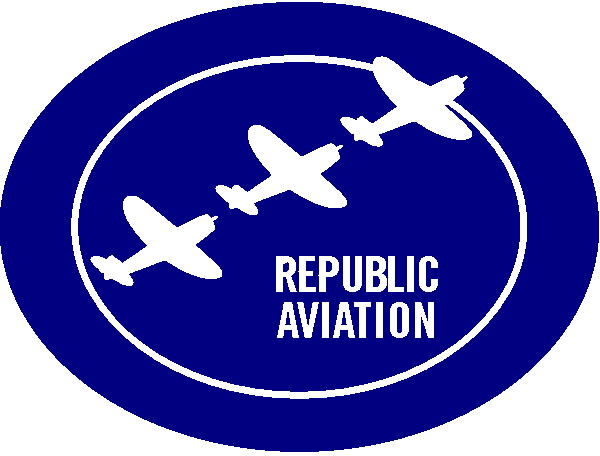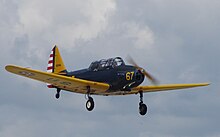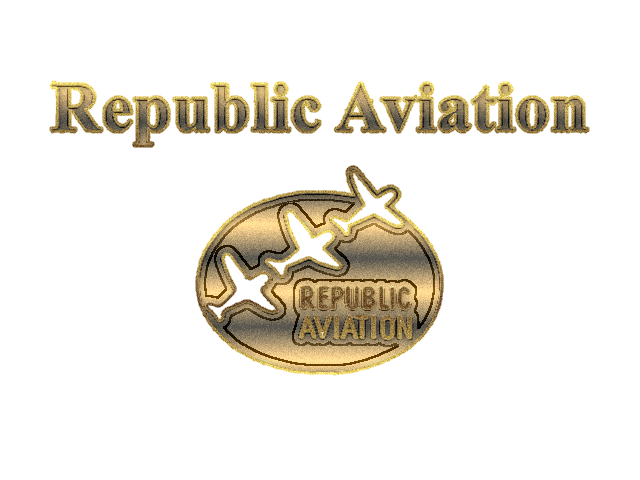Fairchild Aviation Fairchild PT-19
 |
|
| Fairchild PT-19 | |
| Role | Trainer |
|---|---|
| Manufacturer | Fairchild Aircraft |
| First flight | 15 May 1939 |
| Introduction | 1940 |
| Primary users | United States Army Air Corps United States Army Air Forces Royal Canadian Air Force Royal Air Force |
| Number built | 7,700+ |
.
History Fairchild Aviation Corporation
Fairchild PT-19 model M62

According to H.L. Puckett, "Still U.S. pilots were receiving their primary flight training in biplanes, although the low wing advance trainer was in use. A look around showed that there was no low wing primary trainer being produced in the U.A. Fairchild felt this urgency and set his organization at work on such a low wing trainer with the proposal that the new proven Ranger be used as the power plant for the new airplane to be known as the M-62. The M-62, which was to become the PT-19, was to use the experience gained from the F-24 and the more recent Model 46.
In 1944, Republic Aviation's chief designer, Alexander Kartveli, began working on a turbojet-powered replacement for the P-47 Thunderbolt piston-engined fighter aircraft. The initial attempts to redesign the P-47 to accommodate a jet engine proved futile due to the large cross-section of the Thunderbolt's fuselage. Instead, Kartveli and his team designed a new aircraft with a much-slimmer fuselage housing an axial compressor turbojet engine in the rear fuselage, and an air intake in the nose of the fuselage, with air ducts running from the nose to the engine and taking up much of the fuselage volume. Fuel was mainly stored in tanks in the thick, but laminar flow airfoil, unswept wings
Variants
Straight-wing variants

Fairchild PT-19 - Ranger L-440-1 Engine (Aircraft # 40-2418) 
Fairchild PT-19 used in the Little Norway training camp. Now at the Canadian Warplane Heritage Museum 
- PT-19
- Initial production variant of the Model M62 powered by 175 hp L-440-1, 270 built.
- PT-19A
- As the PT-19 but powered by a 200 hp L-440-3 and detailed changes, redesignated T-19A in 1948, 3226 built.
- PT-19B
- Instrument training version of the PT-19A, 143 built and six conversions from PT-19A.
- XPT-23A
- A PT-19 re-engined with a 220 hp R-670-5 radial engine.
- PT-23
- Production radial-engined version, 774 built.
- PT-23A
- Instrument training version of the PT-23, 256 built.
0
KmCeiling
0
KmCombat RANGE
0
Km/hAircraft Speed
0
Max Crew
Photo Gallery
Fairchild Aviation Corporation
Fairchild PT-19 model M62


Fairchild Aviation Corporation
Fairchild PT-19 model M62
General Info
-
-
- Crew: two (pilot, student)
- Length: 28 ft 0 in (8.53 m)
- Wingspan: 36 ft 0 in (10.97 m)
- Height: 10 ft 6 in (3.20 m)
- Wing area: 200 sq ft (19 m2)
-
Powerplant
-
- Wing area: 200 sq ft (19 m2)
- Empty weight: 1,845 lb (837 kg)
- Gross weight: 2,545 lb (1,154 kg)
- Powerplant: 1 × Ranger L-440-3 6-cyl. inverted air-cooled in-line piston engine, 200 hp (150 kW)
-
Performance
- Maximum speed: (132 mph, 212 km/h)
- Range: 350 nmi (400 mi, 640 km)
- Service ceiling: (4,700 m)
- Time to altitude: 17.5 min to 3,000 m
.
Links to Youtube & Others
As of 2011, there were 98 airworthy aircraft worldwide.
One example is found at the Travis Air Force Base Aviation Museum, Travis Air Force Base, Fairfield, California
Fairchild Aviation
PT-19 model M62
Development of the type continue and in 1935 the Bf 108B appeared with the fin and rudder having undergone modifications.
Youtube Link
Conceived as a competitive aircraft the Bf 108 would take part in the 1936 Berlin Olympics.













